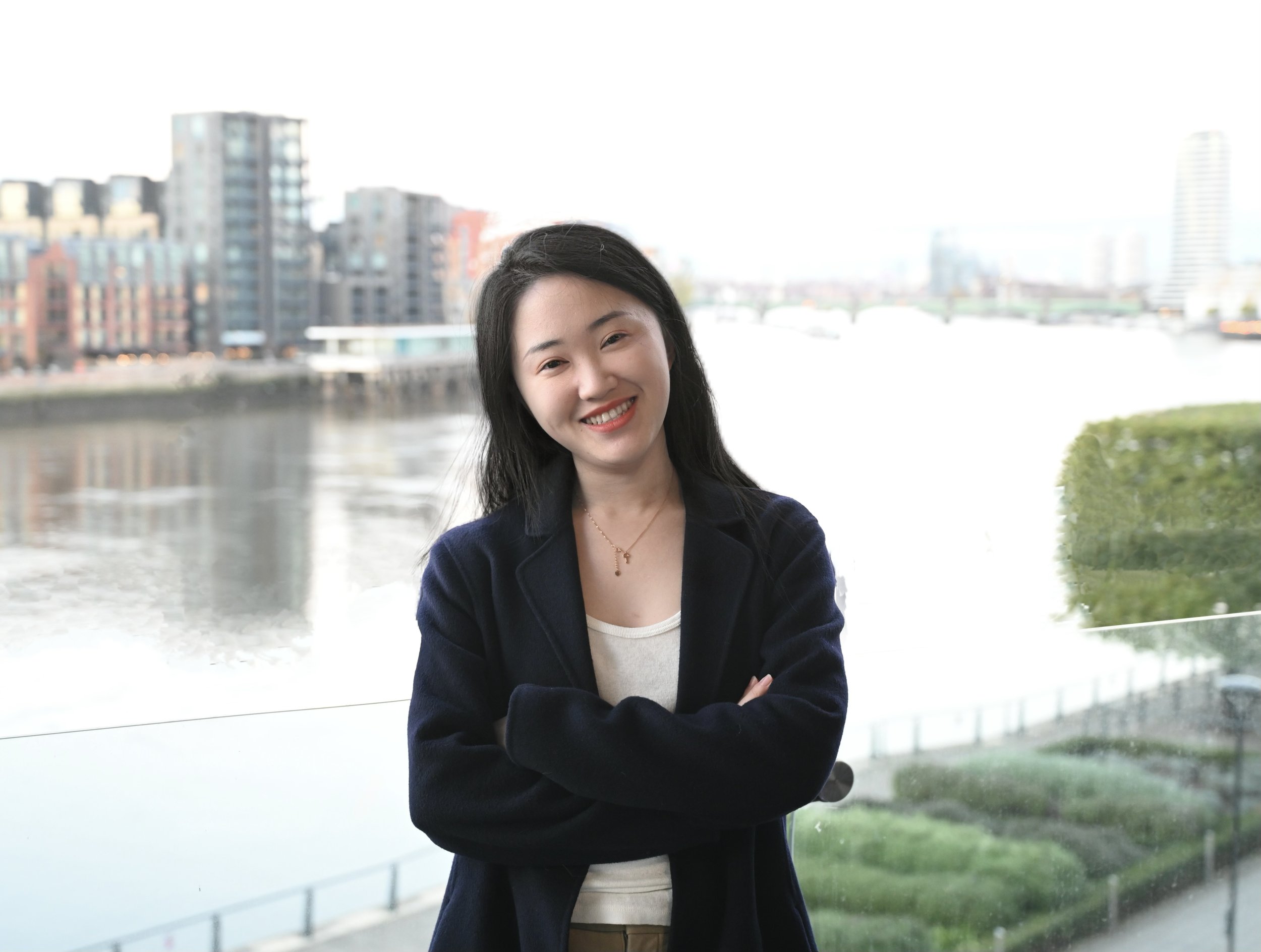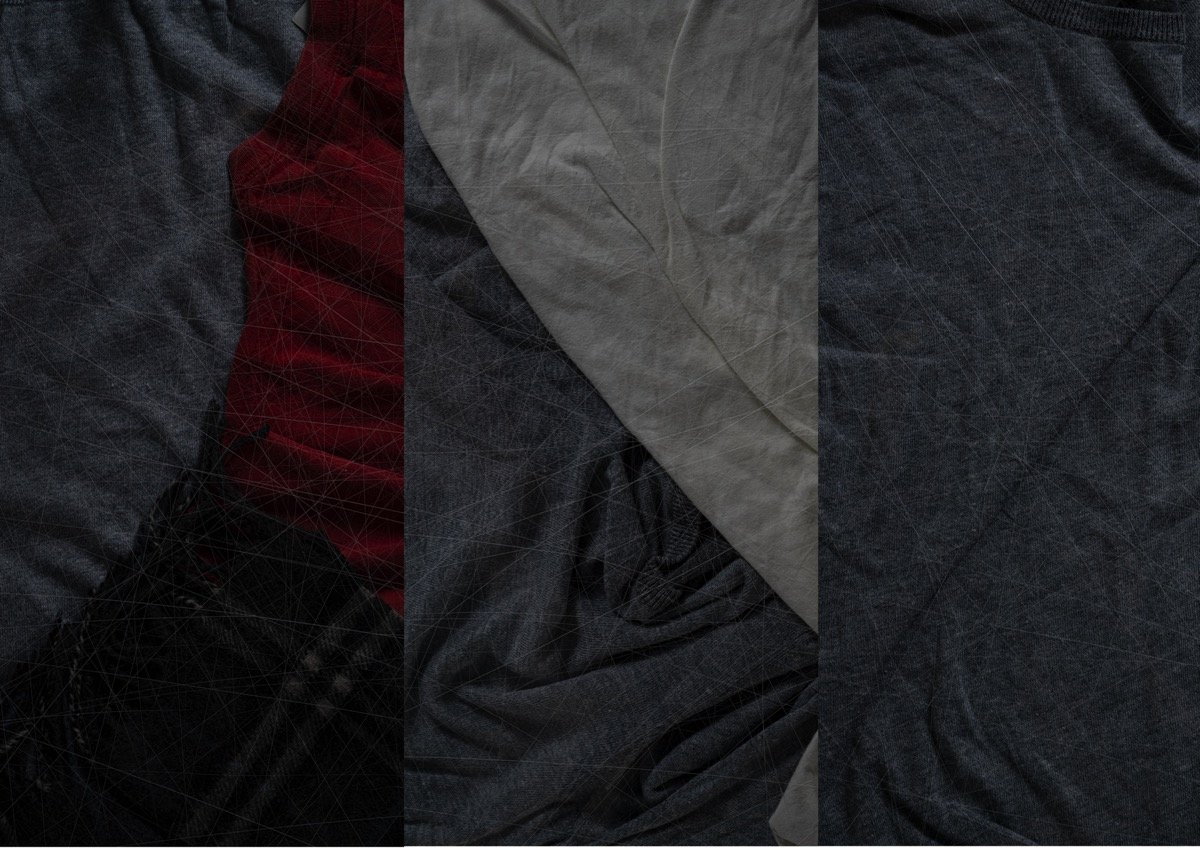Runqiu Peng in Conversation with Emerging Artist Weiyu Dou
Weiyu Dou is an emerging artist currently studying at the Royal College of Art in the Art and Humanities master program. Despite coming from a Traditional Chinese Painting background in her undergraduate, Dou’s work now spreads across painting, sculpture, performance, and installation. Having a sense of softness, at first sight, Dou’s work touches people with strong emotions and profound thoughts behind them.
Weiyu Dou.
Runqiu Peng: Your undergraduate major was Traditional Chinese Painting, but most of your works now are installations or performance art. Was there any particular occasion which influenced you to make this turn?
Weiyu Dou: I wouldn’t say it's a deliberate shift. Throughout my general practice, I don't limit myself to any particular medium, but rather it was my artistic struggle that brought me to this change. I remember practising painting bamboo day and night when I studied Traditional Chinese Painting since it has a strong cultural connotation in China. However, I felt disconnected from bamboo; it was just a hollow symbol. Most of the time, I didn't know what I was painting because I had never seen bamboo with my eyes - it is too cold to grow bamboo in the place where I studied.
One day, I finally got an opportunity to see real bamboo. I was deeply touched by its formality and structure the instant I saw it. I observed the midribs and veins of the bamboo, noticing where it goes and how it branches out. I was so emotionally moved by its natural beauty that I drew the bamboo repeatedly. I love drawing real bamboo, not the lifeless symbol in my university classes: no one told me why I had to paint it the way it was; I just had to.
Looking for Bamboo, 2021. Performance and photography. Olympics Forest Park, Beijing, China.
This reflection on drawing bamboo led me to create my performance work Looking for Bamboo (2021). I took inspiration from one of the corporal punishments in ancient China named “Raining Plum Blossom,” where a prisoner was made to lie on a bed while layers upon layers of wet xuanzhi (rice paper) were applied to their mouth and nose, suffocating the prisoner to death. Referencing “Raining Plum Blossom”, I also wrapped my body with layers of rice paper painted with bamboo to express how bamboo as a symbol restrained my artistic creativity. During the performance, the suffocating feeling that rice paper gave me was so strong that I started to try and break out from the paper. There was a thunderstorm on the day of the performance, and the rice paper ran down with the rain with my movements of tearing it apart. A sense of relief and resurrection occurred to me after I came out. It was not only a break from the rice paper as it was in this performance, but it was also my break from the old system of Traditional Chinese Painting.
Looking for Bamboo, 2021. Photography. Permanent installation, Liaoning River Plain, Xinmin, China.
RP: In your current practice, what are the things that inspire you to create?
WD: Pain is the origin of my creativity. At first, I didn't know how to create contemporary art, so my teacher encouraged me to look at the most painful things I have endured. There are two sayings about art production that hit me. One states that an artist will only begin to create if the pain of not creating outweighs the pain of bothering the creation process. The other one is more romantic: the origin of art comes from the fact that I don't want to forget what you look like tonight. Yet, it's not love that I want to record, but pain. For example, the departure of the other person in an emotional relationship makes me feel pain, which in turn ignites my artistic creativity.
The Scratch with a German Friend, 2021. Photography, clothes, photographs, letters, acrylic, absorbent resin, 224 x 135 cm. Installation, Window Space, Shenyang, China.
RP: Memory is also an important part of your work. What does memory mean to you? How has it influenced your creative work?
WD: To me, memory is a concrete thing. It has the capacity to overwhelm you at any time and any place. When I first came to the UK, I remember being woken up once at 3 am by loud noises from my flatmates and unable to sleep again. I was very agitated and had no way of calming down. To relax, I started to search for my memories. I remembered a wild cliff that I had visited with my ex-boyfriend. It was the quietest place I had ever been in my life, with no other sounds except the chirping of seabirds. The coastline stretched as far as eyes could see, and no other things were visible. It was a particular memory that immediately calmed me down the moment I thought of it. Before this, I had to take pills to relieve the discomfort caused by stress and anxiety, but that was the first time I discovered memory’s curing function. Inspired, I started making art projects about memory and insomnia.
Louis Stood in the Middle of Sea 1, 2022. Water dry painting tool, rock colour on hemp paper, covered with silk, 130 x 97cm. Window Space, Shenyang, China.
RP: This is also why your works always seem to have a sense of softness. Do you deliberately choose this gentleness when you create?
WD: No, it is not a conscious choice. I am a person who creates intuitively. My works are direct subconscious expressions from me without any careful design. When I learn something, I don't necessarily need to bring its media form into my current creation; it is already engraved in me during the process of learning. For example, I used to study Traditional Chinese Painting and still have memories of it from the past. Without having any illusions of Chinese art in my works, people still feel its Chinese characteristics straight away. My works always reflect my personality and what I have been through before.
Hugging Me, 2022. Wool, paper, crayons, tangled with wire, size variable. Royal College of Art, London, UK.
RP: Can you share any new creations you have worked on recently?
WD: I want to make a sculpture that people can touch. I am working on a large shell with a heated bulb so people can feel the warmth when they touch it. The shell’s two sides originally came from different shells, just like how we try to find each other in this vast world. The shell can be a symbol of eros since Venus was also born in a shell in Botticelli’s famous painting The Birth of Venus (1485-6). Heated from top to bottom, the shell's temperature drops accordingly, which relates to how eros is worn out in intimate relationships. The inspiration for this work comes from my observation of the imbalance of passion in relationships. While one person might be dedicated to a relationship with total energy and enthusiasm, the other does not engage. The person who puts in more effort is usually the one who gets hurt, and the love between these two people evaporates as time goes on.
Adam’s Dream, 2022. Shell, lightless heat bulb, plaster, size variable. Royal College of Art, London, UK.
PR: As a female artist, what do you think of the current situation of women in the art industry?
WD: The art ecosystem in China is still a male-dominated one. Teachers at our undergraduate school are mostly male, holding most of the power. This oppression was relieved when I came to the Royal College of Art. At the opening ceremony, my teacher proudly announced that 40% of the staff at the RCA were women. I was particularly moved by this point. Although the status of female artists has significantly improved, male artists dominate the art industry as a whole. There is still a long way to go to achieve gender equality.
All images are courtesy of the artist.
Thanks to Weiyu Dou on behalf of MADE IN BED.
To learn more about Weiyu Dou, follow her on Instagram.
Main Writer:
Runqiu Peng
Interviews Co-Editor, MADE IN BED
Contributors:
Chenpu He
Interviews Co-Editor, MADE IN BED
Shifan Wang
Contributing Writer, MADE IN BED








